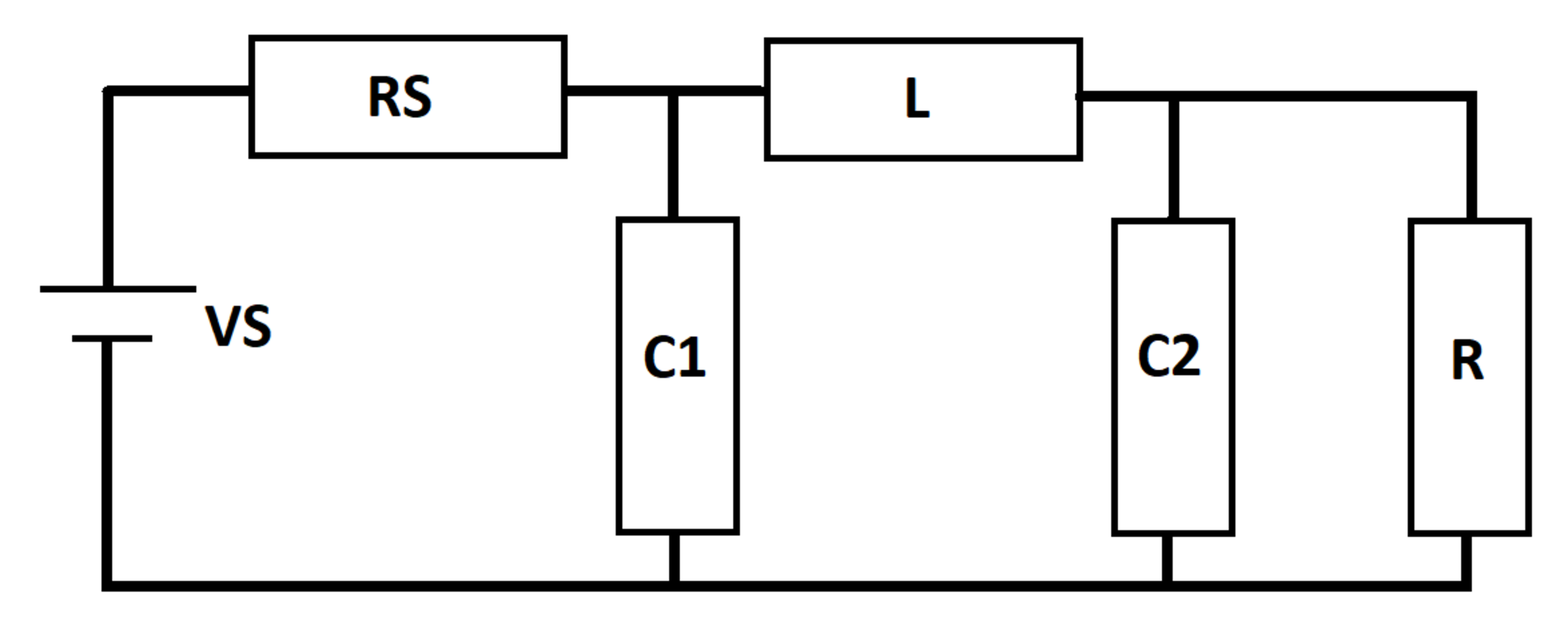Pi Circuit
An RLC pi circuit is energized by a DC voltage source on one side, and loaded by a resistor on the other side. At time , the inductor and capacitors are de-energized. Let be the current flowing out of the voltage source.
Determine the following integral:
Details and Assumptions:

The answer is 7.777.
This section requires Javascript.
You are seeing this because something didn't load right. We suggest you, (a) try
refreshing the page, (b) enabling javascript if it is disabled on your browser and,
finally, (c)
loading the
non-javascript version of this page
. We're sorry about the hassle.
Circuit equations using Kirchoff's laws:
I S = I 1 + I L I L = I 2 + I R q ˙ 1 = I 1 q ˙ 2 = I 2 − V S + I S R S + C 1 q 1 = 0 − C 1 q 1 + L I ˙ L + C 2 q 2 = 0 I R R = C 2 q 2
This time, I am omitting the details of recasting equations into a state-space form. Initial conditions:
q 1 ( 0 ) = q 2 ( 0 ) = I L ( 0 ) = I 2 ( 0 ) = I R ( 0 ) = 0 ; I 1 ( 0 ) = 1 0
Numerically integration gives the required answer as 7 . 7 7 7 . The value 3 1 0 happens to be the steady-state source current which can be found by simply inspecting the circuit.
I will update the solution if more details are requested. As for the plot of source current vs. time, I have not attached one, but it is easy to conclude by inspection that the current I S starts at a value of 1 0 A at t = 0 and decays to a steady-state value of 3 1 0 A after a long time. Due to the dynamics of the circuit, it is observed that the decay of current happens in an under-damped manner.